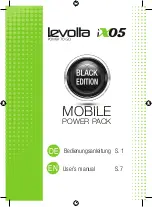
Removing the bit
CAUTION!
Risk of injury!
The bit can become very hot during use.
- Let the bit cool down and wear gloves to remove the bit or
adjust the bit position.
7
14
2 3
1. Set the device down on a non-slip surface with the bit holder
15
pointing up.
2. Slide down the bit locking sleeve
14
with one hand.
3. Pull out the bit
2
/
3
with your other hand.
The bit has been removed.
Operation
18









































